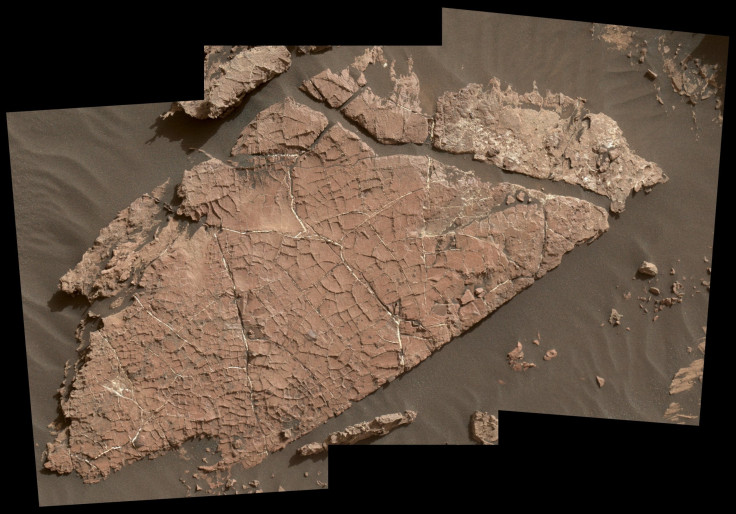NASA’s Mars Rover Curiosity Is Examining What Could Be Cracks In Mud Over 3 Billion Years Old

It is already known for a fact that Mars, our arid neighbor, once had liquid water. And while the planet has polar ice caps, frozen water was also recently found underground in the mid-northern hemisphere of Mars, an area otherwise too hot for liquid water to survive on the surface.
NASA’s Curiosity rover, which has been on Mars since Aug. 6, 2012, is now studying a geological formation on Mars that could provide more evidence for liquid water having existed on the Martian surface a long time ago. The rover has been examining slabs of rock that have numerous shallow ridges, in a site called “Old Soaker” on lower Mount Sharp on Mars. And astronomers think the ridges were originally cracks formed in mud as it dried over 3 billion years ago.
“Even from a distance, we could see a pattern of four- and five-sided polygons that don’t look like fractures we’ve seen previously with Curiosity. It looks like what you'd see beside the road where muddy ground has dried and cracked,” Nathan Stein, Curiosity science team member, said in a statement Wednesday.
If Stein and his colleagues are on the right track, it would be the first time Curiosity confirmed mud cracks — technically called desiccation cracks — on Mars. “They would be evidence that the ancient era when these sediments were deposited included some drying after wetter conditions,” according to the statement.
Mars had large lakes of liquid water, both on its surface and below, over 2 billion years ago. The examination of the mud cracks, which due to the passage of time now appear as raised ridges, may also help in understanding the wet-dry cycles on the planet all that time ago.
Curiosity project scientist Ashwin Vasavada of NASA's Jet Propulsion Laboratory in Pasadena, California, said in the statement: “The ancient lakes varied in depth and extent over time, and sometimes disappeared. We’re seeing more evidence of dry intervals between what had been mostly a record of long-lived lakes.”
© Copyright IBTimes 2024. All rights reserved.





















